Inside The New York Botanical Garden
Archive: February 2011
Posted in Bill Buck, From the Field, Science on February 14 2011, by William R. Buck
Ed. note: NYBG scientist and Mary Flagler Cary Curator of Botany, Bill Buck is currently on expedition to the islands off Cape Horn, the southernmost point in South America, to study mosses and lichens. Follow his journeys on Plant Talk.

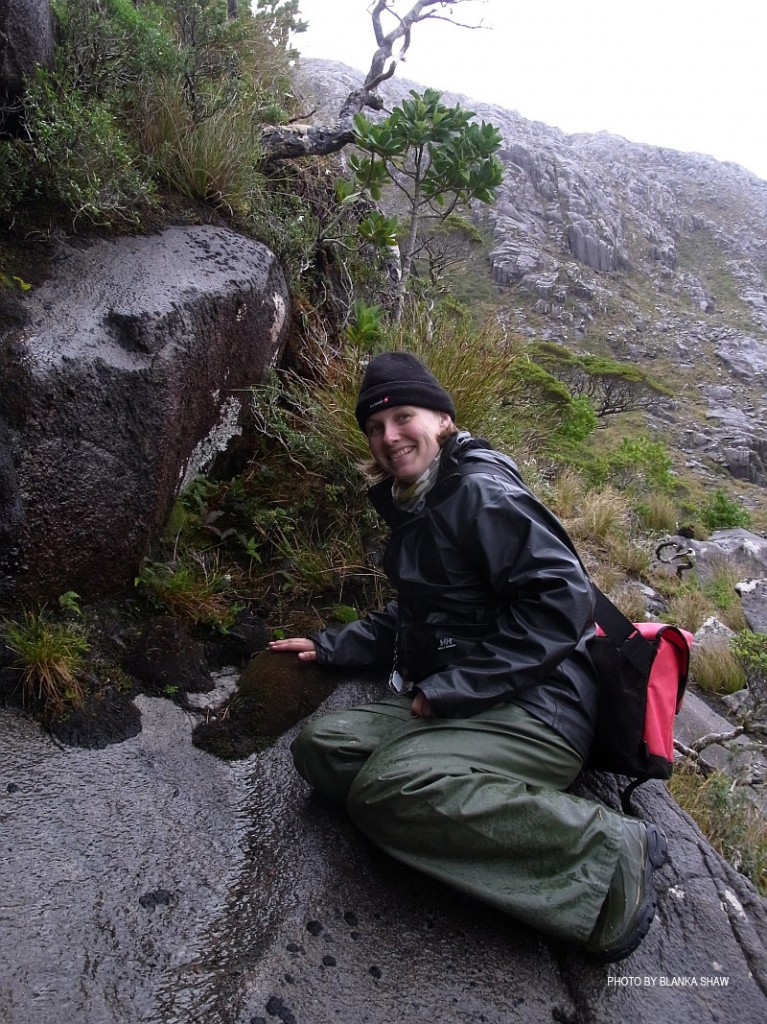 February 8, 2011; Punta Arenas, Chile; final entry
February 8, 2011; Punta Arenas, Chile; final entry
On the morning of February 6, we arrived in Seno Término, an appropriate name for our last day in the field. The weather mirrored our reluctance to finish such an amazing expedition. The skies were heavily overcast and a constant light rain fell. It seemed reasonable that our last day in the field would be a wet one, like so many before it. Seno Término runs, more or less, east-west, meaning that where we anchored was quite choppy. Across the sound, where there was a less substantial barrier to the wind, sheets of rain flew by one after another.
Despite (or maybe because of) the weather, no one wanted to stay out of the field today. I chose a small band of forest at the base of a granite mountain; at least in the forest the wind is much less. Time zoomed by as I worked back and forth through the forest, reaching and ascending the lower parts of the mountain whenever I could. Even at this late date, with so many sites under our belts, interesting mosses continue to be found. I realized that here, on this last day, I had finally gotten in shape so that climbing a hill didn’t make me out of breath. Talk about a day late and a dollar short!
At lunchtime we moved to our final collecting site, Seno Ocasión, opposite Isla Aguirre, where we had visited earlier. The cold rain persisted, but what was really dampening our spirits was the realization that our expedition was all but over. 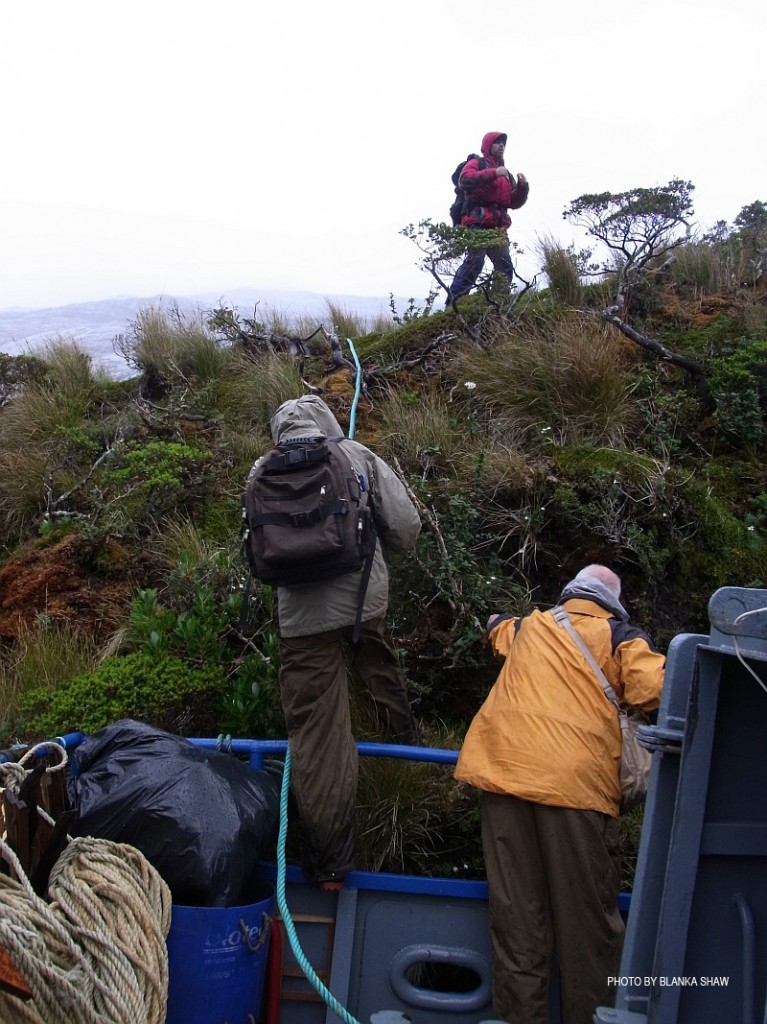 The ship was tied to a rock wall and we were able to just jump ashore and begin our collecting. The destination-oriented collectors ran ahead in an attempt to reach a nearby rocky peak. Apparently in these exposed areas the wind was fierce and prevented much progress. On the other hand, Kimmy and I hadn’t made it far from the ship when I spotted a steep ravine that ran right down the sea (which the others had run past). It was wet and slippery, but it’s always harder going down than climbing up, so we decided to chance it. At times I had to remove my collecting pack and leave it behind in order to fit onto narrow ledges that I wanted to access. In the end my efforts were rewarded with a moss no one on our ship recognized. Having to crawl backwards to get off the ledge was a small price to pay.
The ship was tied to a rock wall and we were able to just jump ashore and begin our collecting. The destination-oriented collectors ran ahead in an attempt to reach a nearby rocky peak. Apparently in these exposed areas the wind was fierce and prevented much progress. On the other hand, Kimmy and I hadn’t made it far from the ship when I spotted a steep ravine that ran right down the sea (which the others had run past). It was wet and slippery, but it’s always harder going down than climbing up, so we decided to chance it. At times I had to remove my collecting pack and leave it behind in order to fit onto narrow ledges that I wanted to access. In the end my efforts were rewarded with a moss no one on our ship recognized. Having to crawl backwards to get off the ledge was a small price to pay.
Every great journey must end. But, there's always next year! More below.
Posted in Photography on February 14 2011, by Plant Talk
A little Valentine to you, our visitor! May you always be surrounded by love, peace, and roses.
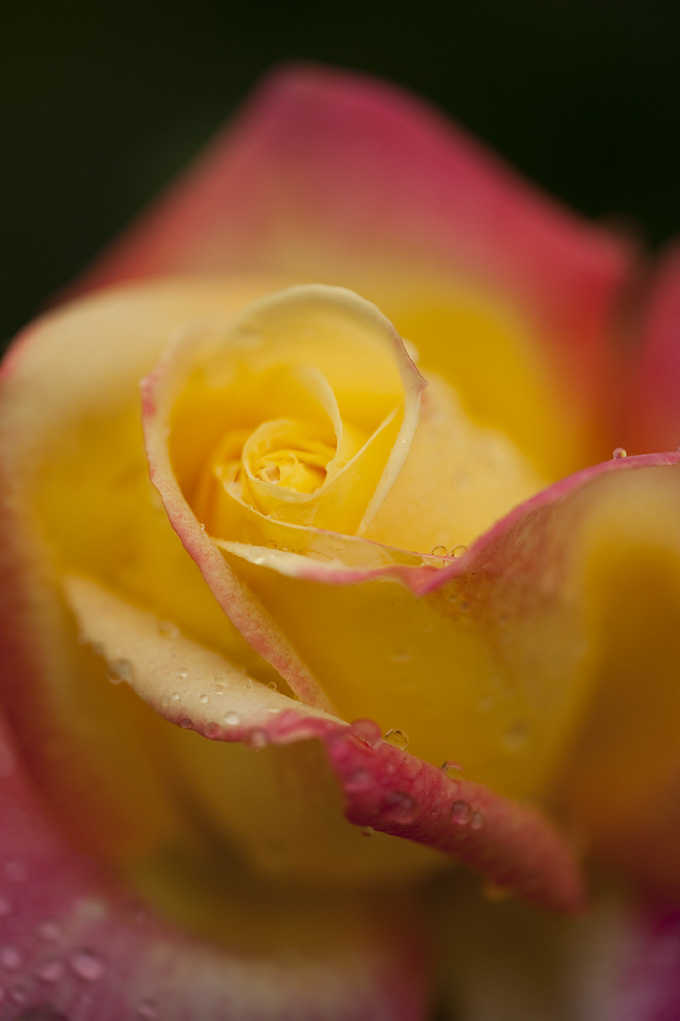
Rosa “Love and Peace” (photo by Ivo M. Vermeulen)
Posted in Bill Buck, From the Field, Science on February 13 2011, by William R. Buck
Ed. note: NYBG scientist and Mary Flagler Cary Curator of Botany, Bill Buck is currently on expedition to the islands off Cape Horn, the southernmost point in South America, to study mosses and lichens. Follow his journeys on Plant Talk.
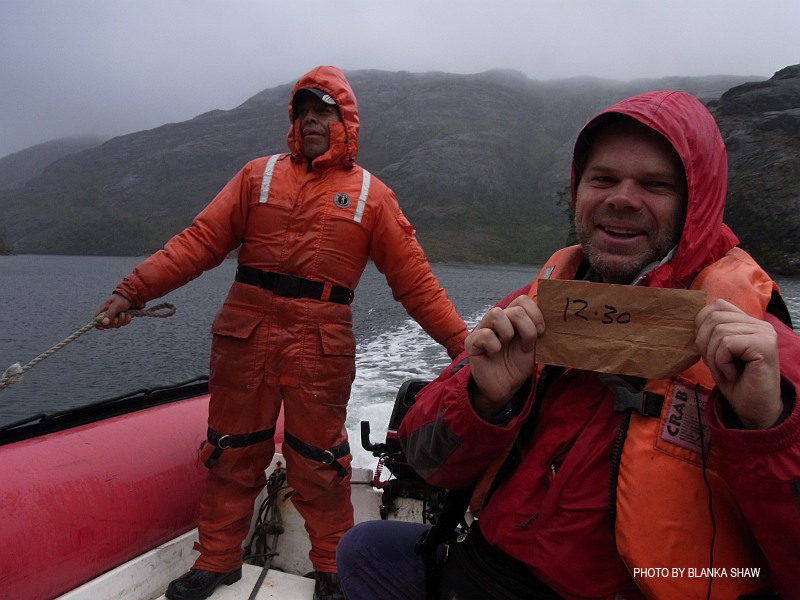 February 5, 2011; unnamed sound northwest of Isla Georgiana, 54°35’S, 71°49’W
February 5, 2011; unnamed sound northwest of Isla Georgiana, 54°35’S, 71°49’W
As we awoke in Seno Aragay, at the isthmus of the Brecknock Peninsula, a steady, cold rain fell. At least it wasn’t windy.
After a hot breakfast of freshly fried bread, we suited up in our rain gear and headed into the field. Due to the weather we decided three hours in the morning would be about all we could tolerate. Jim and Matt headed in one direction while Blanka and I headed in another. As I came to the summit of a rise I saw Juan and Kimmy being dropped off near the base of a waterfall. As I wandered over the terrain, I desolately picked up the standard mosses just to document their distribution. I got wetter and wetter and colder. On this next to the last day in the field, as we get nearer and nearer to heading home, it was proving hard to get up much enthusiasm as my hand-lens became useless as it was constantly fogged up. When I realized I still had almost two hours left before being picked up, I headed to the base of a dripping cliff.
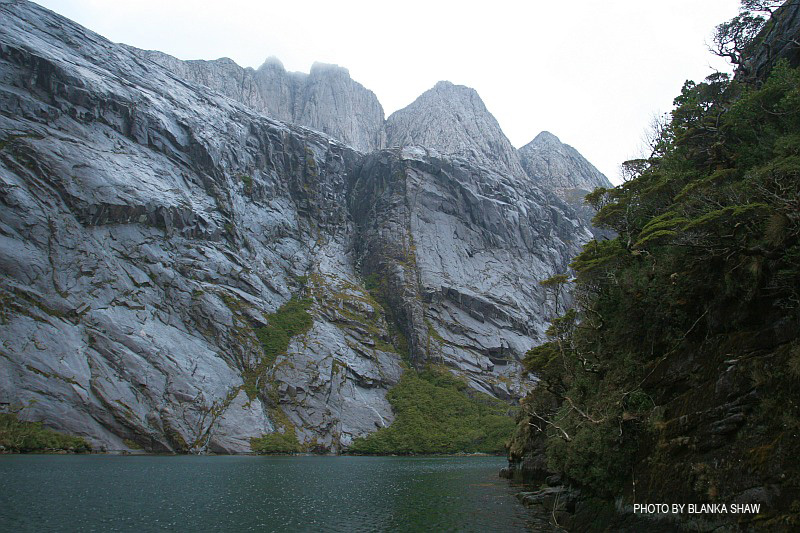 Upon arriving there, in no time at all I completely forgot about being cold and wet. Instead I was focused on the mosses that grew in sheltered areas under rock overhangs. Here they get less rain (even though, in addition to the rain I was continuously being dripped on from the water running off the cliff) and so i found a completely different suite of species. A couple of these were ones I had not seen before on this trip and I became completely oblivious to my physical discomforts.
Upon arriving there, in no time at all I completely forgot about being cold and wet. Instead I was focused on the mosses that grew in sheltered areas under rock overhangs. Here they get less rain (even though, in addition to the rain I was continuously being dripped on from the water running off the cliff) and so i found a completely different suite of species. A couple of these were ones I had not seen before on this trip and I became completely oblivious to my physical discomforts.
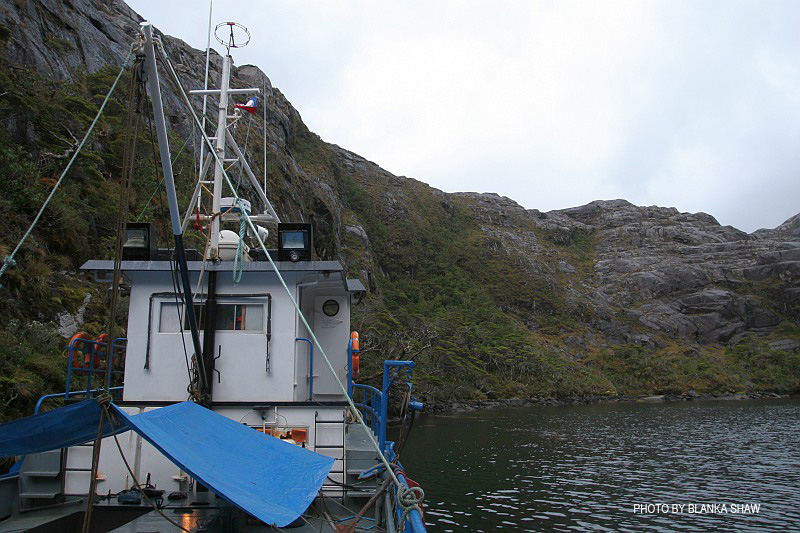 I finally saw Blanka on a slope below me and I called to her to come up to where I was. Like me before her, she looked pretty miserable, at least until she got to the cliff base. Instantly her excitement grew as she found liverworts she hadn’t been seeing elsewhere. Quite quickly, Blanka’s promise of only staying there for 10 minutes grew to over 30 minutes. Ultimately, we had to leave to get down to the shore, far below, for our scheduled rendezvous with the zodiac. We were the last to get back to the ship and so the engine room, where we hang wet clothing to dry, was already packed. However, having this space to dry clothing is a godsend; in only a few hours the wettest piece of clothing is dry and warm.
I finally saw Blanka on a slope below me and I called to her to come up to where I was. Like me before her, she looked pretty miserable, at least until she got to the cliff base. Instantly her excitement grew as she found liverworts she hadn’t been seeing elsewhere. Quite quickly, Blanka’s promise of only staying there for 10 minutes grew to over 30 minutes. Ultimately, we had to leave to get down to the shore, far below, for our scheduled rendezvous with the zodiac. We were the last to get back to the ship and so the engine room, where we hang wet clothing to dry, was already packed. However, having this space to dry clothing is a godsend; in only a few hours the wettest piece of clothing is dry and warm.
Bill's worst fear comes true. It's time to lunch on kelp soup!
Posted in Photography on February 13 2011, by Plant Talk
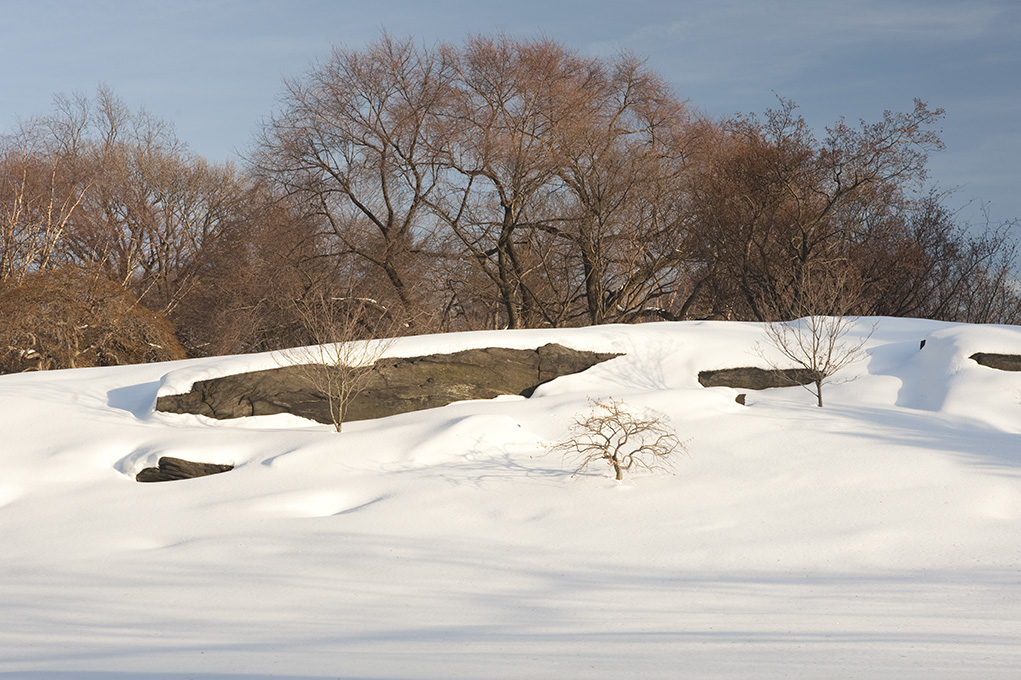
(photo by Ivo M. Vermeulen)
Posted in Bill Buck, From the Field, Science on February 12 2011, by William R. Buck
Ed. note: NYBG scientist and Mary Flagler Cary Curator of Botany, Bill Buck is currently on expedition to the islands off Cape Horn, the southernmost point in South America, to study mosses and lichens. Follow his journeys on Plant Talk.
February 4, 2011; unnamed sound directly east of Seno Mama, 54°35’S, 71°34’W
 Yesterday was a busy day and I didn’t finish working on my specimens until 10:30 p.m., at which time I just wanted to hit my bunk, not my notebook! The day before yesterday we worked in a beautiful wet forest and we all collected lots of specimens, almost all of which were saturated with water. Not surprisingly, we’re baling in more collections than our drying system can handle, especially with five bryologists in the field. Most collections take about two days to dry on the lowest rack and longer on the upper shelves. At this point we all have wet specimens awaiting dryer space. And it certainly didn’t help that I made almost 100 collections yesterday.
Yesterday was a busy day and I didn’t finish working on my specimens until 10:30 p.m., at which time I just wanted to hit my bunk, not my notebook! The day before yesterday we worked in a beautiful wet forest and we all collected lots of specimens, almost all of which were saturated with water. Not surprisingly, we’re baling in more collections than our drying system can handle, especially with five bryologists in the field. Most collections take about two days to dry on the lowest rack and longer on the upper shelves. At this point we all have wet specimens awaiting dryer space. And it certainly didn’t help that I made almost 100 collections yesterday.
After awhile I am sure that all these places are starting to sound the same to you, especially since you are not here.  Quite honestly, at this point, many of our sites are even beginning to merge in my mind. I can distinctly remember the moment when I collected a moss and what the microhabitat looked like, but on which island or in which sound I found it is another story entirely. I assume that this will only get worse in the upcoming days because we are now hitting various sounds that go into the southern shore of Isla Grande (i.e., the large island) of Tierra del Fuego.
Quite honestly, at this point, many of our sites are even beginning to merge in my mind. I can distinctly remember the moment when I collected a moss and what the microhabitat looked like, but on which island or in which sound I found it is another story entirely. I assume that this will only get worse in the upcoming days because we are now hitting various sounds that go into the southern shore of Isla Grande (i.e., the large island) of Tierra del Fuego.
 Yesterday afternoon we stopped at our final two small islands. We anchored in the canal separating Isla Brecknock from Isla Macías. The last time we divided our group between two islands Jim felt he got the less interesting island and so this time I let him pick first. He and Matt chose Isla Brecknock because it is the larger of the two islands and had a nice waterfall descending near where we were. Blanka, Kimmy, and I took Isla Macías.
Yesterday afternoon we stopped at our final two small islands. We anchored in the canal separating Isla Brecknock from Isla Macías. The last time we divided our group between two islands Jim felt he got the less interesting island and so this time I let him pick first. He and Matt chose Isla Brecknock because it is the larger of the two islands and had a nice waterfall descending near where we were. Blanka, Kimmy, and I took Isla Macías.
Get a lesson on how to move through a fairy tale forest below.
Posted in Photography on February 12 2011, by Plant Talk
As if M.C. Escher were in the Conservatory.
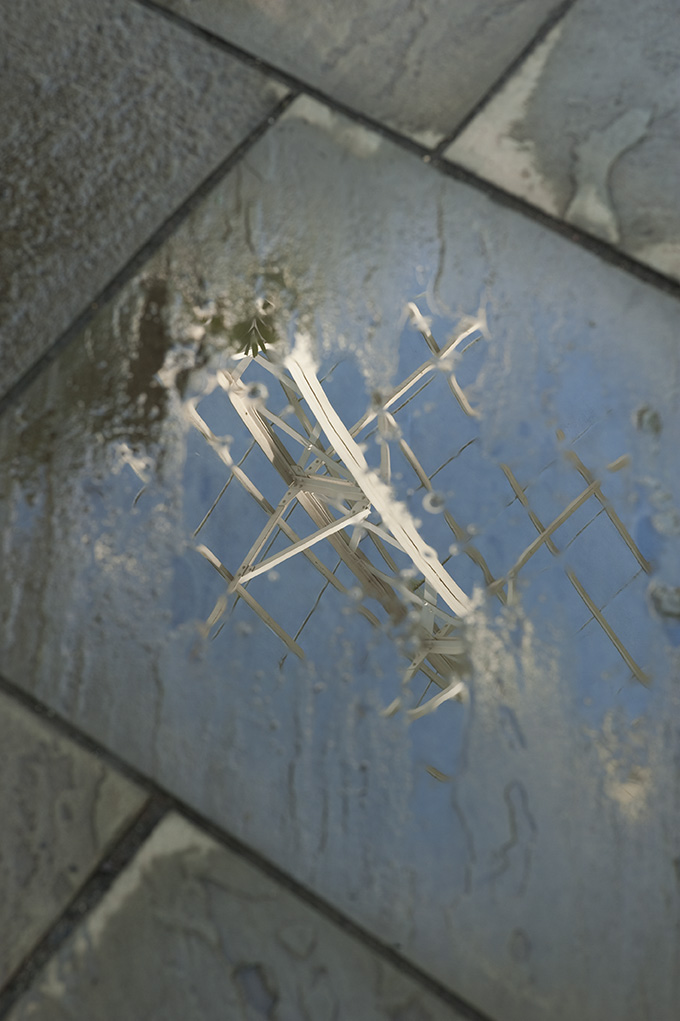
The Conservatory (photo by Ivo M. Vermeulen)
Posted in Bill Buck, From the Field, Science on February 11 2011, by William R. Buck
Ed. note: NYBG scientist and Mary Flagler Cary Curator of Botany, Bill Buck is currently on expedition to the islands off Cape Horn, the southernmost point in South America, to study mosses and lichens. Follow his journeys on Plant Talk.
February 2, 2011; Seno Courtenay, northern arm, 54°30’S, 71°20’W
 With today came the realization that the days are racing by. Initially it seemed like we had lots of time, but now the calendar is creeping up on us. We have today and the next three days before we head back to Punta Arenas (about a 17 hour trip).
With today came the realization that the days are racing by. Initially it seemed like we had lots of time, but now the calendar is creeping up on us. We have today and the next three days before we head back to Punta Arenas (about a 17 hour trip).
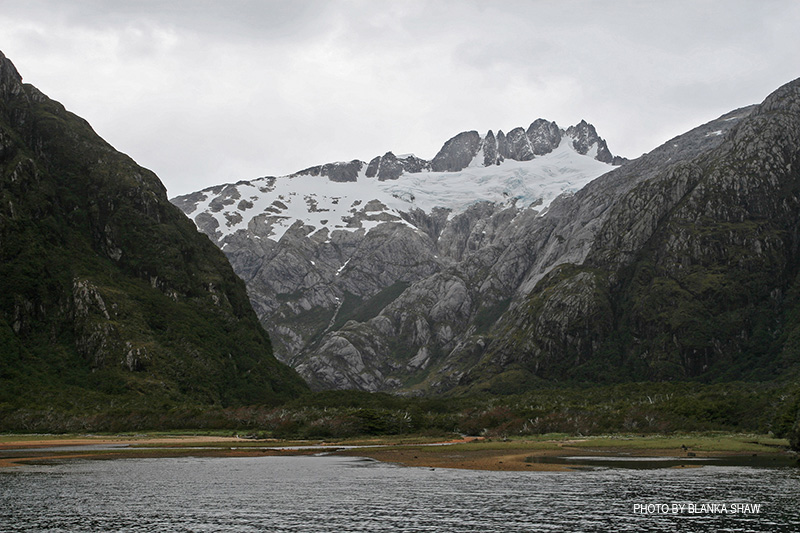 Today was a great collecting day, we all came back delighted with what we had found. Blanka has nicknamed this locality The Enchanted Forest. We are in an eastern arm of Seno Courtenay where several small rivers emerge from what looks like a floodplain forest. There is supposedly a glacier-fed lake upriver, but not one of us has made it that far! At the beginning of the morning I was disappointed when I entered the forest; it seemed like it contained only the standard mosses I have become used to seeing.
Today was a great collecting day, we all came back delighted with what we had found. Blanka has nicknamed this locality The Enchanted Forest. We are in an eastern arm of Seno Courtenay where several small rivers emerge from what looks like a floodplain forest. There is supposedly a glacier-fed lake upriver, but not one of us has made it that far! At the beginning of the morning I was disappointed when I entered the forest; it seemed like it contained only the standard mosses I have become used to seeing. 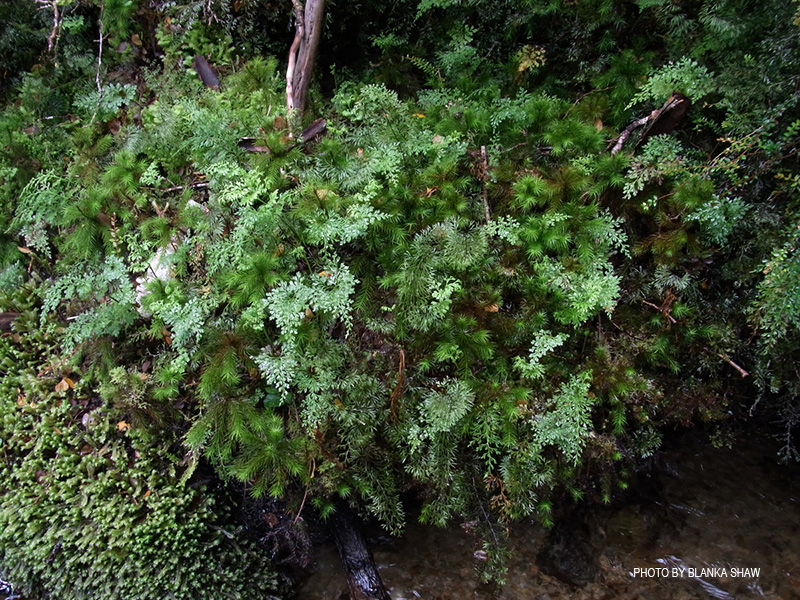 However, as I worked through the forest, the humidity increased as did the number and biomass of epiphytes. The trunks and branches of most trees were sheathed in bryophytes, and even twig epiphytes increased in diversity.
However, as I worked through the forest, the humidity increased as did the number and biomass of epiphytes. The trunks and branches of most trees were sheathed in bryophytes, and even twig epiphytes increased in diversity.
More from The Enchanted Forest below.
Posted in Photography on February 11 2011, by Plant Talk
Bamboo, that is, in the Conservatory where it’s easy to forget about winter. At least for a little while!
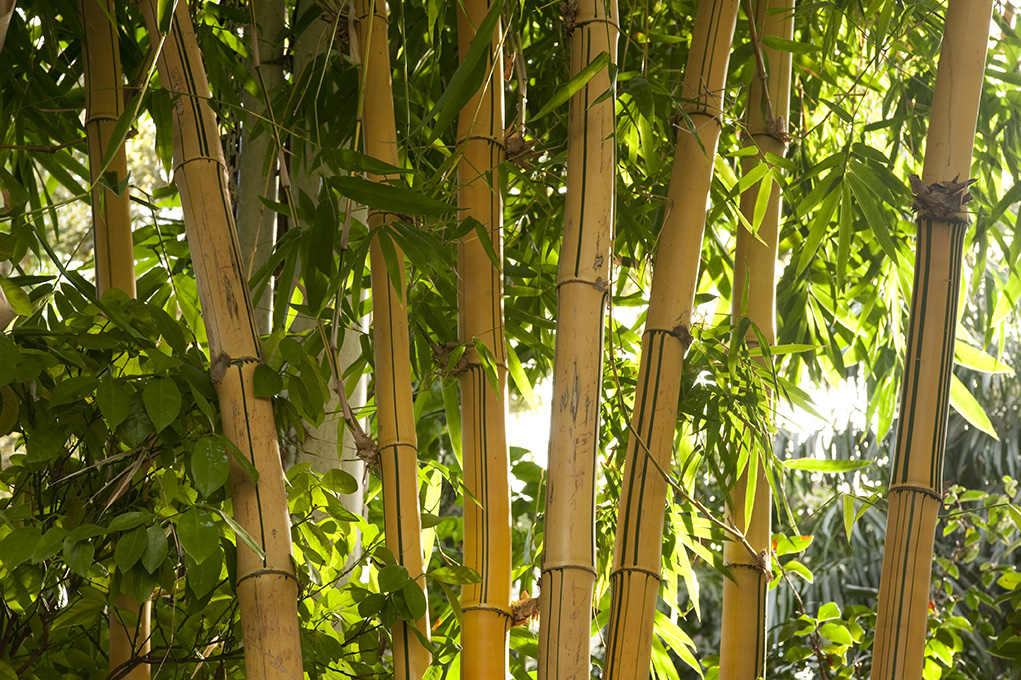
(photo by Ivo M. Vermeulen)
Posted in Bill Buck, From the Field, Science on February 10 2011, by William R. Buck
Ed. note: NYBG scientist and Mary Flagler Cary Curator of Botany, Bill Buck is currently on expedition to the islands off Cape Horn, the southernmost point in South America, to study mosses and lichens. Follow his journeys on Plant Talk.
February 1, 2011; Seno Courtenay, 54°37’S, 71°21’W
 The ship engines started about 6:30 a.m. By this point in our journey, this rouses no one from their bunks except the crew. However, as soon as the engines are cut off it means we have arrived at our next field site and everyone hurries up to breakfast. Every morning for breakfast there is fresh bread, sometimes baked, sometimes fried. It’s a great way to start the day.
The ship engines started about 6:30 a.m. By this point in our journey, this rouses no one from their bunks except the crew. However, as soon as the engines are cut off it means we have arrived at our next field site and everyone hurries up to breakfast. Every morning for breakfast there is fresh bread, sometimes baked, sometimes fried. It’s a great way to start the day.
 Mornings are mostly proving to have reasonable weather, but usually by 1-2 p.m. it starts to rain harder and the winds pick up. This morning we arrived in Bahía Murray on the east side of Isla Basket. The island is named for Fuegia Basket, the name Charles Darwin’s expedition gave to an indigenous young woman that they essentially kidnapped and took to England to “civilize.” The weather–just light continuous drizzle–was not an issue, and we all went ashore to collect. We split into a few groups to cover more habitats. Juan decided to try and reach a peak that rises to about 1600-1700 feet and took our satellite modem with him in an attempt to send out my daily blogs. He got within 50 feet of the summit but couldn’t continue because the rocks were steep and crumbling. Needless to say, the modem still couldn’t find a satellite.
Mornings are mostly proving to have reasonable weather, but usually by 1-2 p.m. it starts to rain harder and the winds pick up. This morning we arrived in Bahía Murray on the east side of Isla Basket. The island is named for Fuegia Basket, the name Charles Darwin’s expedition gave to an indigenous young woman that they essentially kidnapped and took to England to “civilize.” The weather–just light continuous drizzle–was not an issue, and we all went ashore to collect. We split into a few groups to cover more habitats. Juan decided to try and reach a peak that rises to about 1600-1700 feet and took our satellite modem with him in an attempt to send out my daily blogs. He got within 50 feet of the summit but couldn’t continue because the rocks were steep and crumbling. Needless to say, the modem still couldn’t find a satellite.
Scientists at work! More below.
Posted in Learning Experiences, Programs and Events on February 10 2011, by Plant Talk
| Travis Beck, Landscape and Gardens Project Manager, The New York Botanical Garden |
 Every time I’ve spoken to a landscape architect or nursery grower about taking an ecological approach to landscape design–something I’ve been doing a lot throughout the planning and development of the Garden‘s new Native Plant Garden–I keep hearing the same phrase repeated over and over: “You should talk to Colston Burrell.”
Every time I’ve spoken to a landscape architect or nursery grower about taking an ecological approach to landscape design–something I’ve been doing a lot throughout the planning and development of the Garden‘s new Native Plant Garden–I keep hearing the same phrase repeated over and over: “You should talk to Colston Burrell.”
Up until this point I’ve known Burrell mostly through his writing. Of recent note is his American Horticultural Society (AHS) award-winning Hellebores: A Comprehensive Guide. This is the time of year when I really start looking forward to the blooming of the Lenten Rose and other garden hellebores, but Burrell’s knowledge goes far beyond the mere beauty of these harbingers of spring. Another book of his that won an AHS book award is A Gardener’s Encyclopedia of Wildflowers. Wildflowers . . . Now isn’t that just a friendly term for native plants? Burrell is deeply involved with using and promoting native plants, whether he’s lecturing on plants and ecology at the University of Virginia, getting his hands dirty in his own garden, or working on designs through his firm Native Landscape Design and Restoration.
There are a lot of reasons to use native plants. They’re also commonly misunderstood, both by those who overestimate their powers, and those who underestimate their potential. I’m looking forward to getting a real plantsman’s perspective on how to use native plants in the landscape, the perspective of someone who loves wildflowers and hellebores with equal passion. That’s why I’ll be in the front row on February 17, when Colston Burrell speaks as part of NYBG’s 2011 Winter Lecture Series. I hope to see you there!
Burrell’s lecture is at the Garden in the Ross Lecture Hall on Thursday, February 17, from 10 a.m. – 12 p.m. The cost is $39 for non-members, and $35 for Members. The third and final installment of the series will feature director of The New York Botanical Garden’s Children’s Gardening Program, rooftop farmer, and food advocate Annie Novak on Thursday, March 17.

 February 8, 2011; Punta Arenas, Chile; final entry
February 8, 2011; Punta Arenas, Chile; final entry The ship was tied to a rock wall and we were able to just jump ashore and begin our collecting. The destination-oriented collectors ran ahead in an attempt to reach a nearby rocky peak. Apparently in these exposed areas the wind was fierce and prevented much progress. On the other hand, Kimmy and I hadn’t made it far from the ship when I spotted a steep ravine that ran right down the sea (which the others had run past). It was wet and slippery, but it’s always harder going down than climbing up, so we decided to chance it. At times I had to remove my collecting pack and leave it behind in order to fit onto narrow ledges that I wanted to access. In the end my efforts were rewarded with a moss no one on our ship recognized. Having to crawl backwards to get off the ledge was a small price to pay.
The ship was tied to a rock wall and we were able to just jump ashore and begin our collecting. The destination-oriented collectors ran ahead in an attempt to reach a nearby rocky peak. Apparently in these exposed areas the wind was fierce and prevented much progress. On the other hand, Kimmy and I hadn’t made it far from the ship when I spotted a steep ravine that ran right down the sea (which the others had run past). It was wet and slippery, but it’s always harder going down than climbing up, so we decided to chance it. At times I had to remove my collecting pack and leave it behind in order to fit onto narrow ledges that I wanted to access. In the end my efforts were rewarded with a moss no one on our ship recognized. Having to crawl backwards to get off the ledge was a small price to pay.















 Every time I’ve spoken to a landscape architect or nursery grower about taking an ecological approach to landscape design–something I’ve been doing a lot throughout the planning and development of the
Every time I’ve spoken to a landscape architect or nursery grower about taking an ecological approach to landscape design–something I’ve been doing a lot throughout the planning and development of the